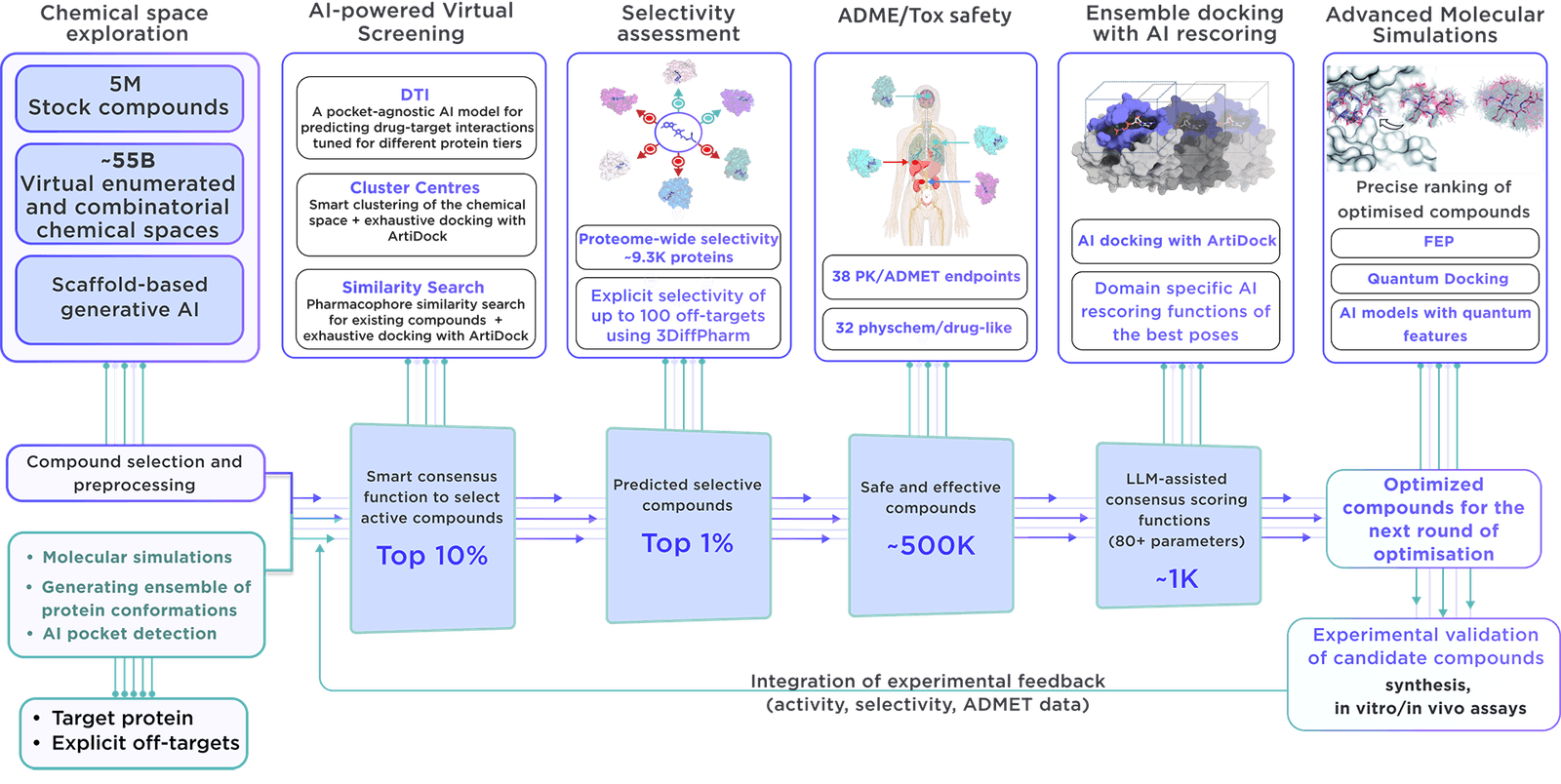Focused On-demand Libraries - Receptor.AI Collaboration
Explore the Potential with AI-Driven Innovation
This extensive focused library is tailor-made using the latest virtual screening and parameter assessment technology, operated by the Receptor.AI drug discovery platform. This technique is more effective than traditional methods, offering compounds with improved activity, selectivity, and safety.
From a virtual chemical space containing more than 60 billion molecules, we precisely choose certain compounds. Reaxense aids in their synthesis and provision.
In the library, a selection of top modulators is provided, each marked with 38 ADME-Tox and 32 parameters related to physicochemical properties and drug-likeness. Also, every compound comes with its best docking poses, affinity scores, and activity scores, providing a comprehensive overview.
We employ our advanced, specialised process to create targeted libraries.
Our methodology leverages molecular simulations to examine a vast array of proteins, capturing their dynamics in both isolated forms and in complexes with other proteins. Through ensemble virtual screening, we thoroughly account for the protein's conformational mobility, identifying critical binding sites within functional regions and distant allosteric locations. This detailed exploration ensures that we comprehensively assess every possible mechanism of action, with the objective of identifying novel therapeutic targets and lead compounds that span a wide spectrum of biological functions.
Several key aspects differentiate our library:
- Receptor.AI compiles an all-encompassing dataset on the target protein, including historical experiments, literature data, known ligands, and structural insights, maximising the chances of prioritising the most pertinent compounds.
- The platform employs state-of-the-art molecular simulations to identify potential binding sites, ensuring the focused library is primed for discovering allosteric inhibitors and binders of concealed pockets.
- Over 50 customisable AI models, thoroughly evaluated in various drug discovery endeavours and research projects, make Receptor.AI both efficient and accurate. This technology is integral to the development of our focused libraries.
- In addition to generating focused libraries, Receptor.AI offers a full range of services and solutions for every step of preclinical drug discovery, with a pricing model based on success, thereby reducing risk and promoting joint project success.
Receptor.AI
Q9NRM6
UPID:
I17RB_HUMAN
ALTERNATIVE NAMES:
Cytokine receptor-like 4; IL-17 receptor homolog 1; Interleukin-17B receptor
ALTERNATIVE UPACC:
Q9NRM6; Q9BPZ0; Q9NRL4; Q9NRM5

